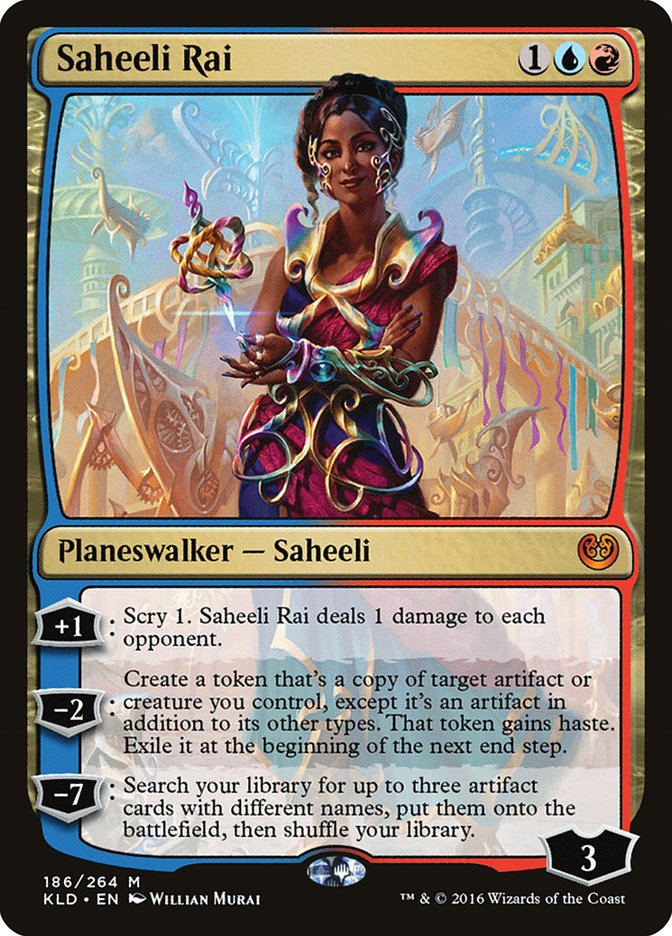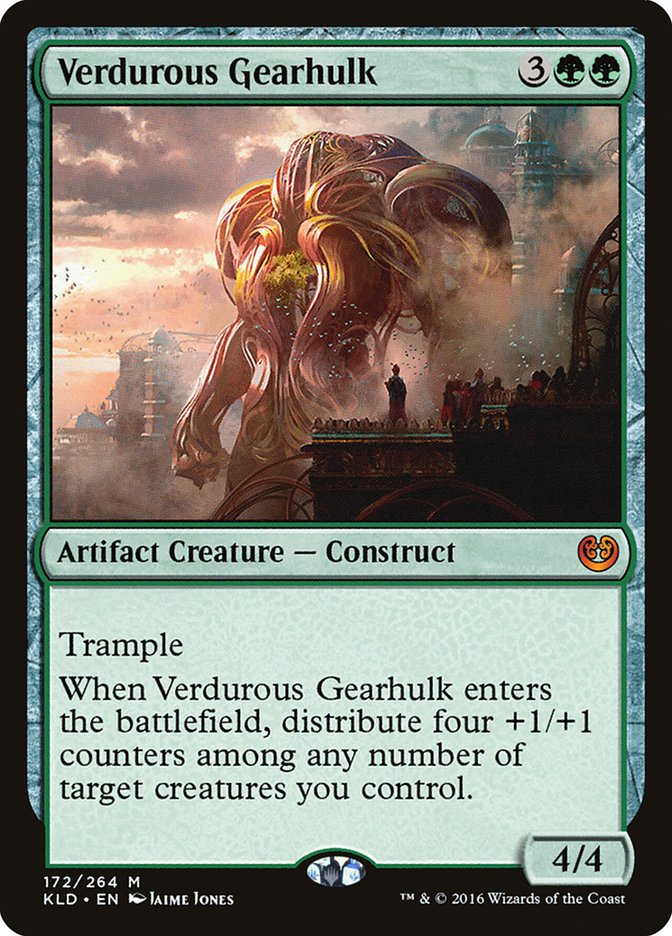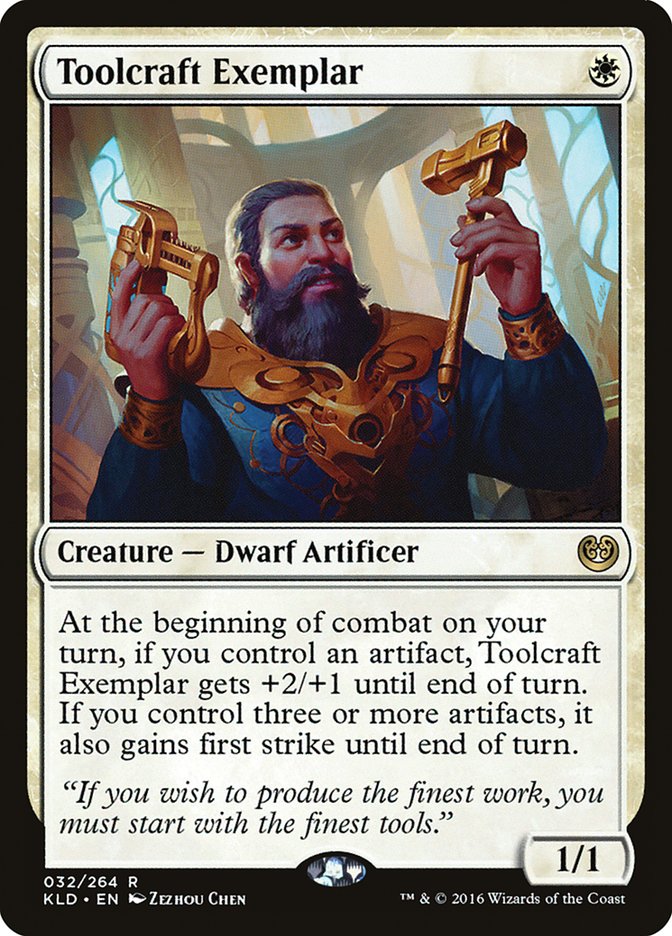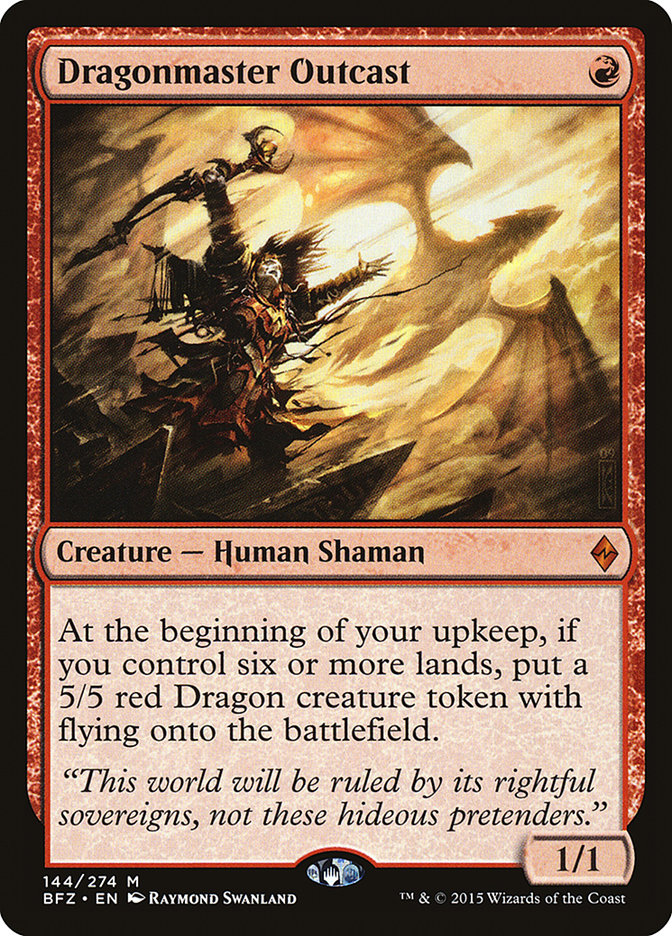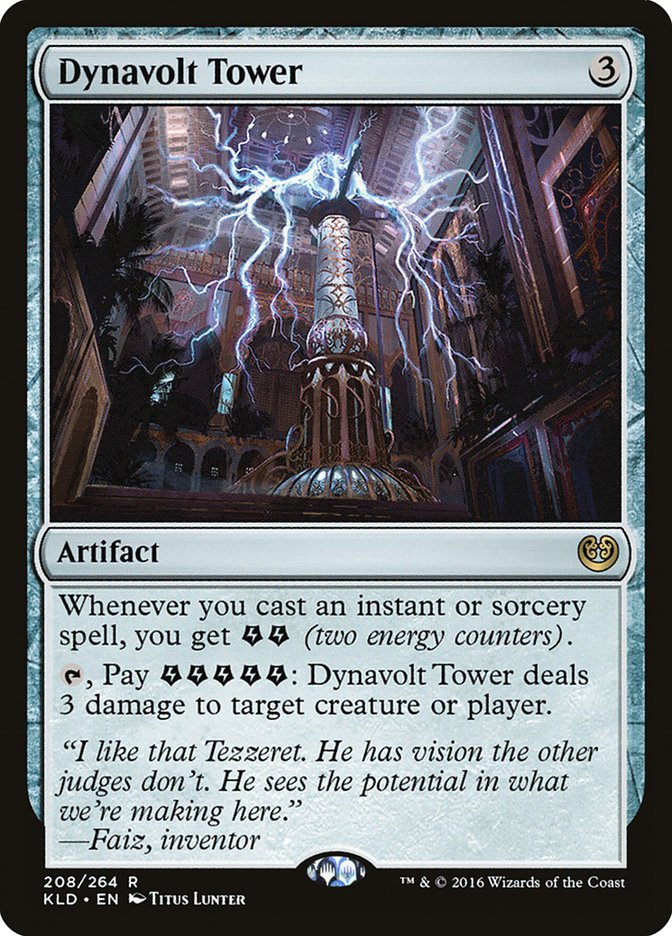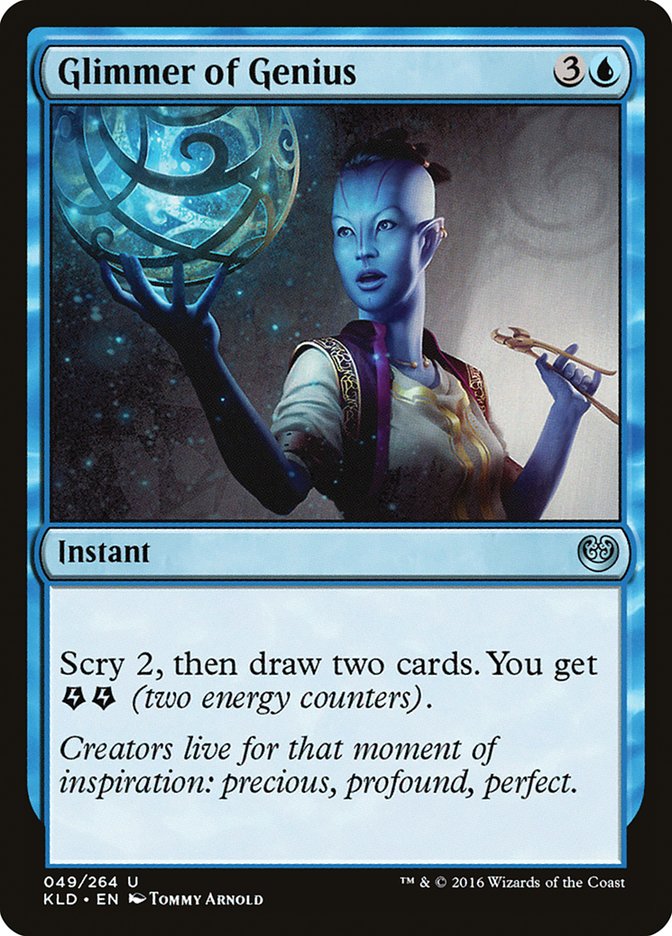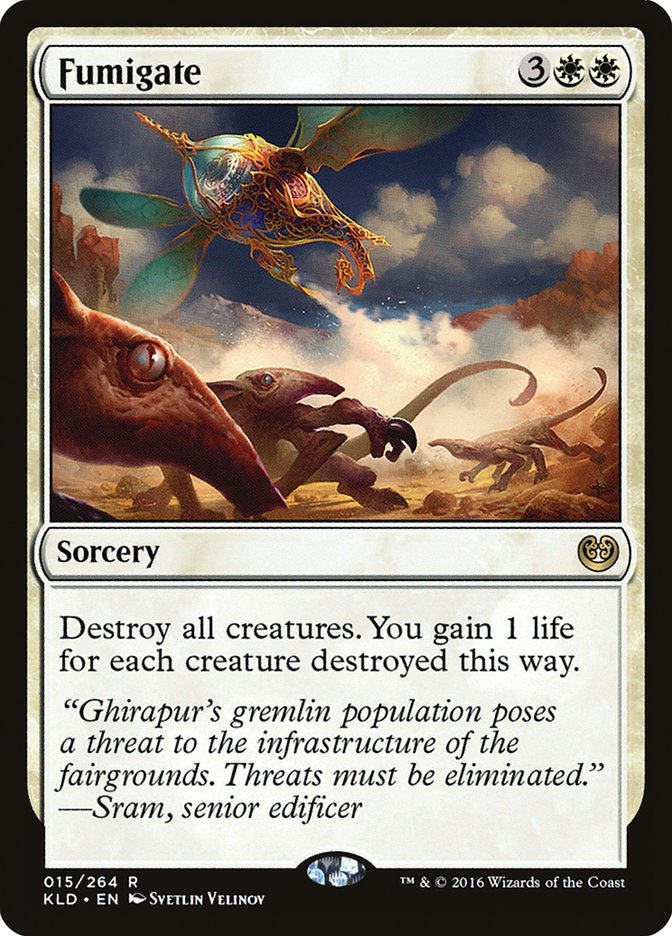Did anyone see this coming? Mardu Vehicles absolutely dominating Pro Tour Aether Revolt with 22% of the Day 1 field is one of the largest upsets I’ve experienced when predicting a PT metagame on a team. This, coupled with its astonishing six copies in the Top 8, made for a very different Sunday from the expected clash of Cat Beasts.
I’m not going to focus too hard on the specifics of Mardu, as Gerry Thompson did a great pre-tournament piece and Cedric dusted off the typewriter for a post-tournament analysis. What I do want to touch on before getting into the details of my own Pro Tour deck is a little bit about the macro nature of Standard.
Is There Still a Big Problem with Standard?
This is such a difficult question to answer, one that I’ve struggled with over the last few weeks. The presence of an instant-kill combo remains solely a net-negative to me. While Jeskai Saheeli ultimately scrapped together a terrible result at the Pro Tour, there were still some Four-Color versions going deep in the tournament, a version of which I played with a lot leading up to Dublin and will touch on later.
That said, despite putting up poor numbers, it just isn’t necessary for the deck to exist. Casting turn 3 Saheeli Rai on the play is massively threatening, especially if your opponent has no battlefield presence. After many games, I ultimately came to the conclusion that I simply had to jam my three-drop into their potential lethal combo, because if I didn’t, I was going to fall too far behind, sometimes simply just to their repeated scry 1 activations.
The fact that Jeskai Saheeli itself forces you to contend with the potential for a Felidar Guardian or Glimmer of Genius on turn 4 and a Torrential Gearhulk / full Felidar combo by blinking a land on turn 6 creates some deeply troubling play patterns. When Jeskai is drawing well against your midrange deck, you feel like you have no chance and can never make a truly educated decision. The worst-case scenario is you die, and the best case is that you’ve entered a tempo black hole where you have to leave up mana every turn with the potential to get snowballed out by Torrential Gearhulk and Glimmer of Genius.
Outside of Saheeli herself, most of the power in Standard is jeopardized by three cards/strategies:
On the one hand, I’m happy that the Gearhulks are seeing play, as they are clearly pushed, powerful, and feel mythic, but is it good that they are some of the clear best things you can do outside of trying to run your opponent over?
At this point it just feels like I’m complaining for the sake of it, which is a position that I never want to be in, but I never really had a lot of fun testing for this Pro Tour, an extreme rarity for me. I love brewing up new decks, and you can be assured that I tried various forms of Inspiring Statuary, Metalwork Colossus, Tezzeret the Schemer, and Aetherflux Reservoir decks, but I never really found it worthwhile to jump through hoops to power up my weaker synergy cards when I could just slam my opponents with Gearhulks.
Here is the closest I got, which was essentially just playing all of the best non-controlling cards and strategies:
Creatures (22)
- 4 Verdurous Gearhulk
- 2 Whirler Virtuoso
- 4 Servant of the Conduit
- 4 Rogue Refiner
- 4 Walking Ballista
- 4 Felidar Guardian
Planeswalkers (4)
Lands (21)
Spells (13)

This deck was really cool in many different ways. It utilized many moving parts and a lot of interlocking synergy, but at the end of the day, it truly was just about jamming most of the most powerful cards in the format together. Whether this is ultimately a good or bad thing is difficult to gauge, but I will note that its weakness to Jeskai in the end is what kept me from playing it. For the record, though, I was comfortable in my matchup against Mardu Vehicles.
Jeskai Control
Playing Jeskai Control at this tournament really went against my general PT philosophy. I love being proactive and want to pounce on any kind of stumbling opponent, particularly ones who are just as good as I am. Further, I don’t want to be losing games because I played around the wrong card at the appropriate time. Control decks in general are difficult to play optimally and typically aren’t dominant.
To some extent, Jeskai Control fixes a lot of this. I went 7-3 in Constructed at the Pro Tour (I’m going to count my last round intentional draw with a friend since we played for fun after) while throwing away a match to bad sideboarding and another to not having the discipline to wait to counter my opponent’s Gideon, Ally of Zendikar.
The strength of Jeskai is that it largely plays like a Delver deck, except your threat costs six mana. After sideboarding in basically every matchup, this was further stressed by our “transformation” into a leaner deck with Thing in the Ice and Dragonmaster Outcast.
Here is the list I played:
Creatures (4)
Planeswalkers (1)
Lands (26)
Spells (29)
- 2 Shock
- 2 Negate
- 4 Anticipate
- 1 Quarantine Field
- 2 Immolating Glare
- 1 Blessed Alliance
- 4 Harnessed Lightning
- 3 Dynavolt Tower
- 2 Fumigate
- 4 Glimmer of Genius
- 4 Disallow
Sideboard

General Thoughts
I chose to play Dynavolt Tower over the Saheeli combo largely because of my teammates (and this would be a solid time to plug that they were great) and the fact that I jumped ship late in the game.
Many of them swore by the Tower, especially as a way to check opposing Saheeli combo decks, and I trusted their judgment, despite the fact that I ended up sideboarding the card out a lot.
Jeskai Control’s best card is Glimmer of Genius. Being able to repeatedly cast Glimmers with Torrential Gearhulk is how you function like a “real” control deck, completely dominating your opponents on every axis of resources. It can also create some frustrating moments, as when you simply don’t draw any Glimmers, you can often end up in situations where it is difficult to take full control.
Jeskai functions so much better after it casts a Glimmer, not only in terms of digging and hitting land drops but also powering up Gearhulks and Harnessed Lightnings, that it is often more effective, especially from an efficiency standpoint, to take the turn off affecting the battlefield and instead cast the card on turn 4. This goes against many of my instincts of playing control decks; usually it is best to completely clean up and cast your spell to gas back up last.
Like I said, this is a glorified Delver deck. While in some situations you can take full control, the presence of Dynavolt Tower especially means that it is often correct to take a huge swing turn in which you flash back something like Harnessed Lightning with Torrential Gearhulk, clear two blockers, and untap and attack with Wandering Fumarole to put your opponent in a pure defensive stance. You can often end up in situations where your opponent is forced into the abyss and you can quickly become the aggressor. Recognizing these situations is important for winning close games and allowing you to leverage even a small amount of resources properly.
Fumigate is fairly bad. I was originally a huge proponent of the card in testing due to how prevalent we assumed B/G would be, but that just wasn’t how the tournament played out. Fumigate is actively undesirable in basically every other matchup, and it can often be difficult to cast conveniently – frequently you will need to Glimmer main-phase because such a high density of your second white sources are going to enter the battlefield tapped.
Once you come to this realization – especially due to the fact that Fumigate is so weak against Mardu Vehicles, the deck has a high number of enter-the-battlefield tapped lands, and it is more likely that opponents won’t be respecting a combo by default – I’m interested in pursuing a U/R list for Grand Prix Pittsburgh and beyond. Before I start to propose a list for that, though, I’ll include a brief sideboard guide.
Sideboarding
I think this would be a good time to touch on a subject. Oftentimes, players will ask, “Why would you have a card/configuration of the maindeck if you’re going to change it/sideboard it out every round?” This is something you’ll see with Jeskai, as I propose sideboarding in Thing in the Ice in basically every matchup.
The answer is that it is difficult for an opponent to configure their deck properly post-sideboard to fight your natural control elements and deal with your creatures. It forces them into a difficult guessing game where, if they draw multiple removal spells, they can die to a flurry of Glimmers, and vice versa. Thing in the Ice and the general strategy is significantly worse in the first game where an opponent is drawing Fatal Push and Grasp of Darkness without suffering any kind of opportunity cost.
Mardu Vehicles
Out:
In:
I tend to be flexible on a Tower/Radiant Flames based whether I’m on the play or draw. I took a loss to Mardu Vehicles on the first day before figuring out how to sideboard against it properly.
Negate is very good, as they will often be going heavier on planeswalkers while additionally fighting Vehicles and removal spells for your creatures.
You have to be willing to take some chip shots to defend yourself against Gideon, Ally of Zendikar, but overall this feels like a strong matchup, and I went 4-1 against it in the tournament. Release the Gremlins in particular is a phenomenal card that I expect to see increase in numbers across the field.
B/G Delirium
Out:
In:
This is how I would sideboard against Jan Ksandr’s Top 8 deck, but you have to remain flexible. Against something like Brad Nelson’s Top 16 deck, which is interested in grinding an opponent out with Lifecrafter’s Bestiary especially, it is important to take this fast and lean approach. You want to get your opponent dead and not actually enter a late-game on average against their various forms of card advantage creatures and artifacts.
Jeskai Control and Combo
Out:
In:
Some of this might appear weird on the surface. Jace, Unraveler of Secrets is supposed to be a “good card” against opposing control decks. Typically it is, but it is difficult to tap out against an opponents in these matchups, especially if the Saheeli combo is present.
The power in Thing in the Ice and Dragonmaster Outcast especially is that they force a significant response with such a small mana investment. Jace can be traded with easily by Negate which is a huge loss in mana.
Again, of course, these things are never set in stone. If your opponent expects you to go full-blown creatures, it might be worthwhile to lean more heavily on Gearhulk and Towers which are less likely to be interacted with easily.
Looking Towards U/R for the Future
Creatures (4)
Planeswalkers (1)
Lands (26)
Spells (29)

There aren’t a lot of massive changes here, but there are a few things worth noting. Again, the mana is much more stable. That’s the biggest plus.
This deck has a far more difficult time cleaning up very large creatures. Fumigate and Immolating Glare were excellent at dealing with Verderous Gearhulk, and that is a cost of playing U/R. On the other hand, we are potentially stronger against Heart of Kiran and Scrapheap Scrounger. Aether Meltdown might not be the actual best card to play over more Incendiary Flows, but its ability to invalidate various Vehicles proactively while being great against Scrounger and powering up Harnessed Lightning is appealing.
Four copies of Negate in the maindeck might be a bit strange, but what is it even bad against? I want to sideboard up to the full amount against control decks and aggressive decks, so I’m not seeing an issue.
There is where I will be starting if I do attend the Grand Prix this weekend, and in fact, I think it is a deck that is more than capable of winning the tournament.


